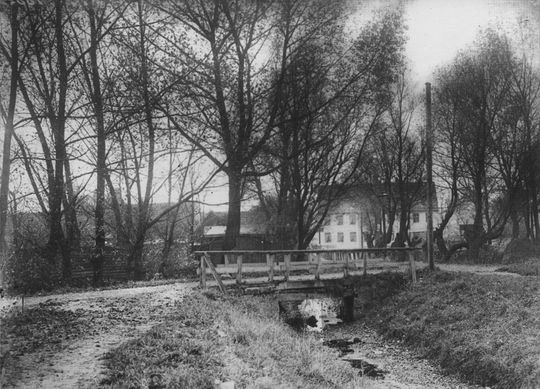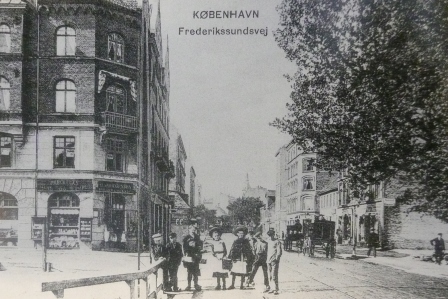


1840 - 1902
Bag Hovedvagten 323
On the 7th
of
February 1840 a teacher at a Catholic school , Wilhelm Schuerer
and carpenter Andreas Mortensen Rohmell sought authorizing
to produce and sell friction matches and the right to
manufacture and sell the corresponding sticks , percussion paper
and wax candles etc.
as well as
the boxes in which they were terminated.
The grant was awarded
the 19th of may 1840.
According to their own registration,
they
started the factory already in 1837 , but in this case it
happened on illegal basis and on a very small scale , since at
that time there was no sale on their address ( Rohmell had
difficulty getting rented the ground floor)
and there was only factory surveys for tannery on site, nor is
it known to the authorities by Benjamin Hellmann's application.
The address "Bag Hovedvagten" (Behind the Main Guard) was a side
street to Kongens Nytorv and Ny Adelgade (orLille Grønnegade
that this street was originally named).
The street disappeared in 1873, during the major redevelopment
of the area where the very narrow and overcrowded alleys, as
PederMadsensGang was demolished.
Rohmell & Schuerer sold the matches in several different kinds
of packaging , from wrapped in simple papir holsters , to be put
in fine wooden boxes.
The price varied in 1840 from 3 rigsdaler 48 skilling to 6
rigsdaler 48 skilling per gros
or 14,400 matches .
In 1841 Rohmell and Schuerer splitted their permission ,
so they got one each and in 1842 Andreas 's half-brother
Peter Frederik Rohmell went in partnership with Schuerer , while
Andreas devoted himself to the production of its patent for
special cigar matches made of wood.
Already in the industrial census in 1842 there were between 60
and 80 employees, mostly women and children .
Andreas moved to Sweden in 1847 to start a match factory and in
1868 Wilhelm Schuerer died, after which Peter Frederik
Rohmell continued as sole owner of the factory P. Rohmell .
But already in 1870, Peter died and his two children Oscar
Julius and Helga Jensine took over the factory where the
medicine trained Oscar for a long time was the formal owner,
while it was Helga Jensine that was in charge of daily
operations.
When the Copenhagen Building Society should renovate the area ,
Rohmell produced for stock , bought a site at Frederikssundsvej
5, diagonally across from Lygterkroen (the lamp inn) and built a
new factory while they moved their outlets around Copenhagen .
Although Helga builted the factory after the new Swedish methods
for Matchstick making , it never reached the same level as when
it was in the center of Copenhagen.
In 1874 the factory employed 9 adults and 9 children .
In 1901 Rohmells factory enteredin a larger aggregation of
factories, conducted by the Private Bank Director Axel Heide:
Kjøbenhavns Tændstikfabrik , Aktietændstikfabrikken Mercur in
Randers and Godthaabsvej Tændstikfabrik , where the machines
from Rohmells factory which was described as " just a label "
was sold to Godthaabsvej Tændstikfabrik .
Denmark's oldest match factory was thus ended.
 Rohmells 2-etages fabrik på
Frederikssundsvej ses gennem træerne og bag broen (billede fra
bogen)
Rohmells 2-etages fabrik på
Frederikssundsvej ses gennem træerne og bag broen (billede fra
bogen)

Hjørneejendommen til venstre, som Helga Rohmell opførte foran
sin fabrik på Frederikssundvej
